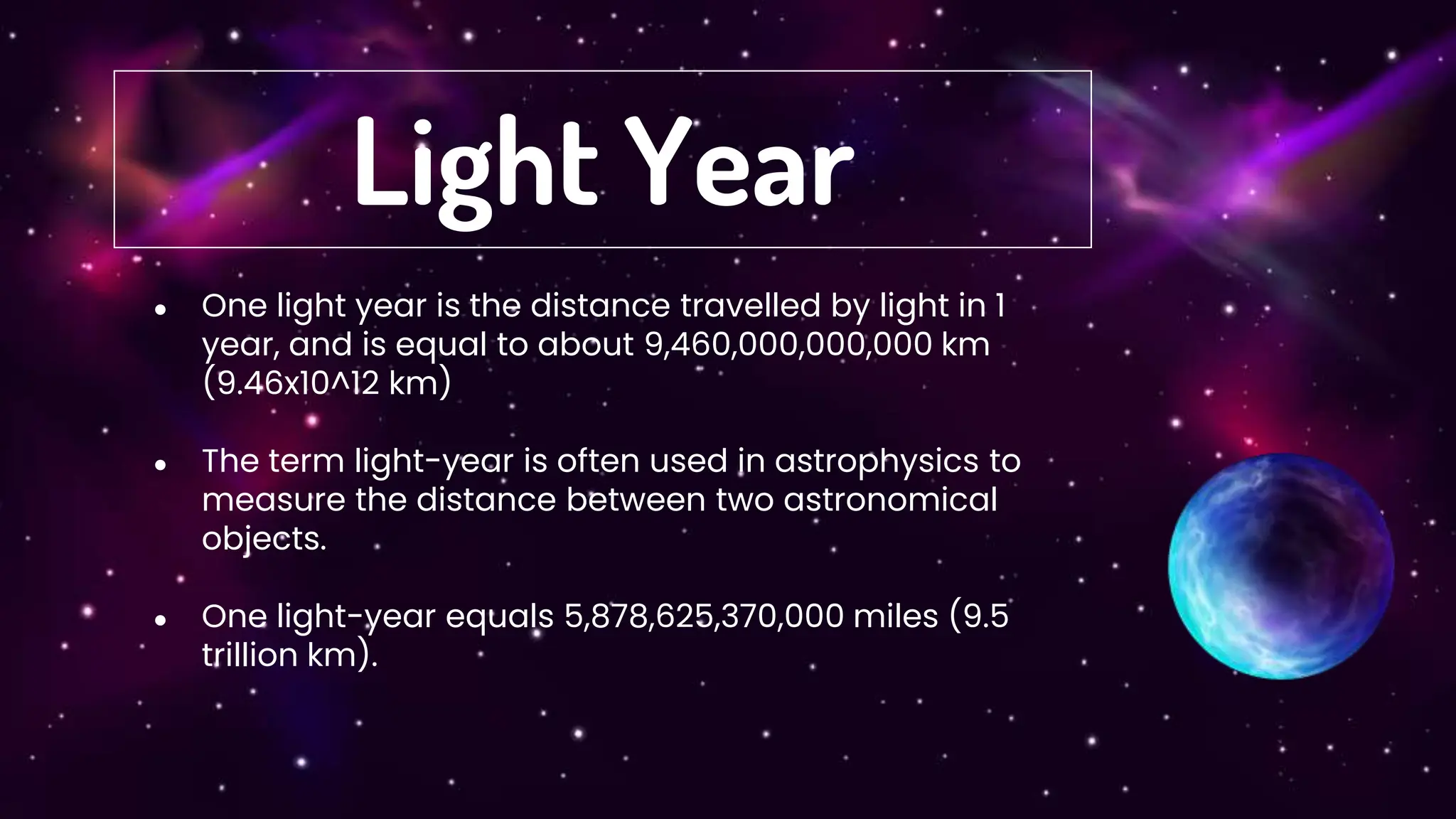The document explains the vastness of the universe, highlighting celestial objects such as stars and planets, and detailing the study of these objects through astronomy. It defines galaxies, including types like spiral, elliptical, and irregular galaxies, and emphasizes the Milky Way, our home galaxy, consisting of 100-400 billion stars. Additionally, the document touches on the motion of galaxies and introduces the concept of a light-year as a measurement of astronomical distances.












